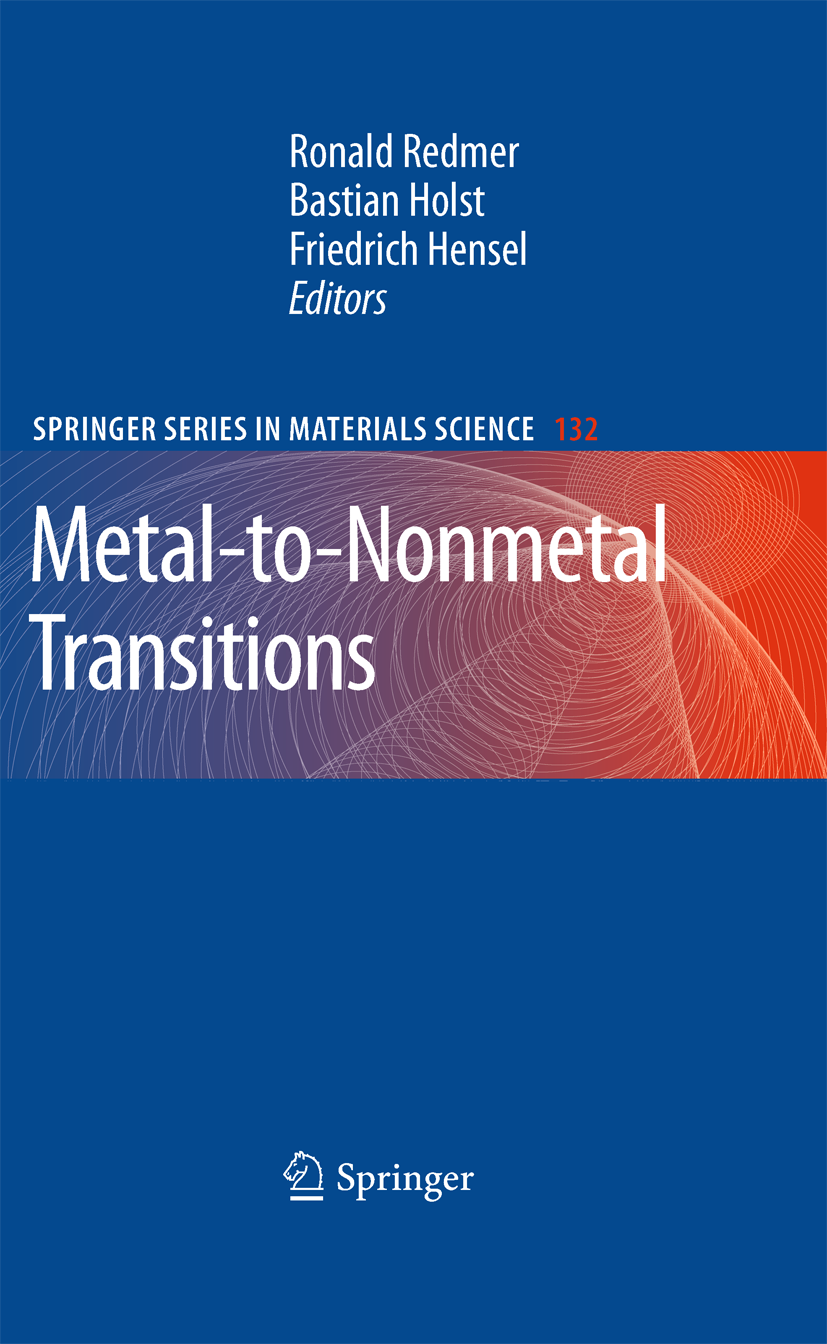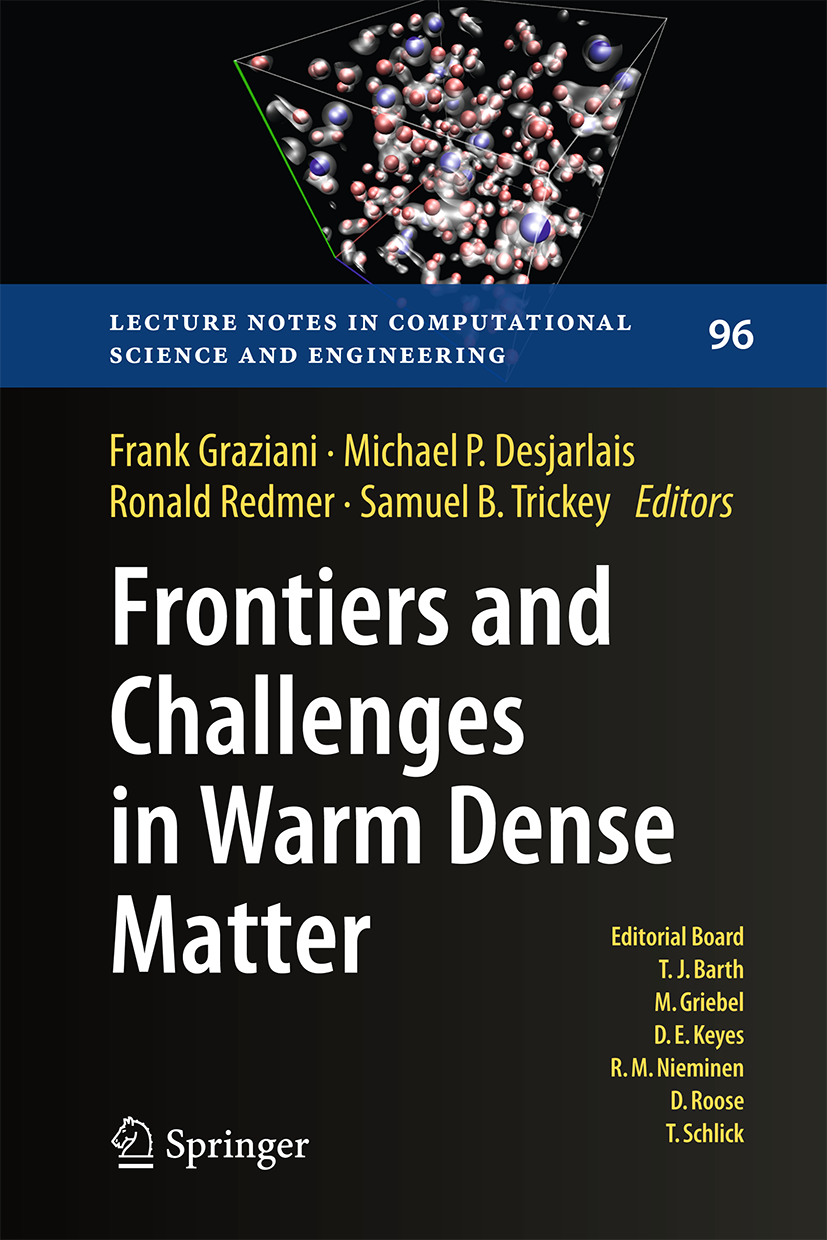Bücher:
Messunsicherheiten – Anwendungen. Für das Physikalische Praktikum
Dieses Buch stellt die Auswertung von Messdaten mit ihren Unsicherheiten für die Anwendung im Physikpraktikum vor. Für die wichtigsten Arten von Messaufgaben findet der Leser eine Zusammenstellung aller notwendigen Formeln zur Bestimmung des Bestwertes und der kombinierten und erweiterten Messunsicherheit sowie praktische Anleitungen zur Bestimmung der Unsicherheiten nach Typ B (nichtstatistische Methode). Zahlreiche Rechenbeispiele geben konkrete Anleitungen und zeigen, wie die Ergebnisse in den Praxisbericht einfließen und wie sie diskutiert werden. Das Kompendium eignet sich für Studierende in einem Bachelor- oder Lehramtsstudiengang der Physik sowie für Studierende in natur- und ingenieurwissenschaftlichen Studiengängen mit Nebenfach Physik.
Link zum Verlag
Metal-to-Nonmetal Transitions
This book is devoted to nonmetal-to-metal transitions. The original ideas of Mott for such a transition in solids have been adapted to describe a broad variety of phenomena in condensed matter physics (solids, liquids, and fluids), in plasma and cluster physics, as well as in nuclear physics (nuclear matter and quark-gluon systems). The book gives a comprehensive overview of theoretical methods and experimental results of the current research on the Mott effect for this wide spectrum of topics. The fundamental problem is the transition from localized to delocalized states which describes the nonmetal-to-metal transition in these diverse systems. Based on the ideas of Mott, Hubbard, Anderson as well as Landau and Zeldovich, internationally respected scientists present the scientific challenges and highlight the enormous progress which has been achieved over the last years. The level of description is aimed to specialists in these fields as well as to young scientists who will get an overview for their own work. A common feature of all contribution is the extensive discussion of „bound states", i.e. their formation and dissolution due to medium effects. This applies to atoms and molecules in plasmas, fluids, and small clusters, excitons in semiconductors, or nucleons, deuterons, and alpha-particles in nuclear matter. In this way, the transition from delocalized to localized states and vice versa can be described on a common level.
Messunsicherheiten – Grundlagen. Für das Physikalische Praktikum
In diesem Buch wird der Umgang mit Messdaten und ihren Unsicherheiten in knapper und anschaulicher Weise dargestellt. Im „Leitfaden zur Angabe der Unsicherheit beim Messen“ (ISO /IEC 98-3:2008) sind die Terminologie und die Methoden für die Behandlung von Messunsicherheiten international standardisiert. Auf dieser Grundlage werden dem Leser Kenntnisse über das Wesen von Messabweichungen, über Messunsicherheit und Wahrscheinlichkeitsverteilung, die Bestimmung der kombinierten und erweiterten Messunsicherheit und über Ausgleichsrechnung vermittelt. Das vorliegende Kompendium ist sowohl für Studierende in einem Bachelor- oder Lehramtsstudiengang Physik als auch für Studierende in natur- und ingenieurwissenschaftlichen Studiengängen mit Nebenfach Physik geeignet
Frontiers and Challenges in Warm Dense Matter
Warm Dense Matter (WDM) occupies a loosely defined region of phase space intermediate between solid, liquid, gas, and plasma, and typically shares characteristics of two or more of these phases. WDM is generally associated with the combination of strongly coupled ions and moderately degenerate electrons, and careful attention to quantum physics and electronic structure is essential. The lack of a small perturbation parameter greatly limits approximate attempts at its accurate description. Since WDM resides at the intersection of solid state and high energy density physics, many high energy density physics (HEDP) experiments pass through this difficult region of phase space. Thus, understanding and modeling WDM is key to the success of experiments on diverse facilities. These include the National Ignition Campaign centered on the National Ignition Facility (NIF), pulsed-power driven experiments on the Z machine, ion-beam-driven WDM experiments on the NDCX-II, and fundamental WDM research at the Linear Coherent Light Source (LCLS). Warm Dense Matter is also ubiquitous in planetary science and astrophysics, particularly with respect to unresolved questions concerning the structure and age of the gas giants, the nature of exosolar planets, and the cosmochronology of white dwarf stars. In this book we explore established and promising approaches to the modeling of WDM, foundational issues concerning the correct theoretical description of WDM, and the challenging practical issues of numerically modeling strongly coupled systems with many degrees of freedom.




